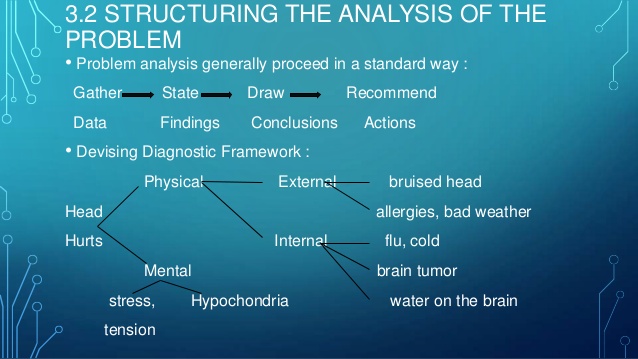


This is the process of combing through your data, identifying the “so what” or implication, and then summarizing data points that have the same implication. Therefore, you need to abstract your data into sensible groupings, so that it’s easy for your reader to understand the argument you are making. And if they cannot make sense of your argument, then they will most certainly doubt your conclusion. So, no matter what your slide deck looks like, your reader will start grouping and summarizing the content into arguments.īut if your slide deck is a mish-mash of disorganized thoughts, then the reader simply won’t be able to make sense of your argument. Humans like to place order on complex situations. In the next section, we will discuss how make your argument indisputable with data and evidence. This is done by summarizing your arguments into coherent groupings, and then sequencing them in a logical way.
Pyramid principle minto pdf file how to#
In this section, we discuss how to articulate your argument in the clearest manner. No part of your logical argument can be disputed by the reader.Your slide deck needs to have an argument that logically leads to your conclusion.And it’s important you lay out your argument in a clear and compelling way, so that they accept your conclusion.įor your reader to agree with your answer, two things need to be true: Those who do want to understand your rationale will start reading the body of your slide deck. Of course, there are some executives who are interested in the rationale of your answer, especially if your answer is unexpected or counter-intuitive. In that article, we break down an Executive Summary from a real-world BCG slide deck and spell-out exactly how you can write them just like a strategy consultant. We won’t go into detail here, but you can check out our article on how to write killer Executive Summaries. Your Executive Summary should follow a Situation-Complication-Resolution structure. Put simply, it means that the very first slide of your slide decks should be an Executive Summary that clearly articulates the implications or recommendations that result from your analysis. And even if they are curious about the analysis, they often don’t have the time to dive into the detail.Īs a rule of thumb, you are better off giving the answer, rather than the argument, as the answer is what the reader cares about.īut in the context of building PowerPoint slide decks, what do we mean by start with the answer? Generally speaking, those executives care more about the recommendation or answer, than about the data and analysis behind it. Executives are trained to think “big picture” and from the top down. You need to remember that you’re writing for busy executives. In those disciplines, you’re taught to build an initial fact base, describe your analyses, and then finish with your conclusion.īut that’s not the best way to communicate in a corporate environment. People tend to think in a “bottom-up” way, especially if they have a technical or research background. Most people aren’t familiar with how to structure their thoughts when communicating to a corporate audience. Support your arguments with data: Ensure that you have data that supports every argument and prevents your reader from disputing them.Group and sequence your arguments: Group similar insights into the same argument and be thoughtful about how to sequence your arguments.Start with the answer: Communicate your answer, conclusion or recommendation immediately, not at the end.Then three main implications to come out of the Pyramid Principle are: Below that top-level thought sit your arguments, and below your arguments sit your supporting data. The Pyramid Principle advocates that your thinking should form a pyramid structure that cascades down from a single, top-level thought. And it quickly spread to other consulting firms and became the “best practice” of corporate communication. In 2009, Barbara Minto summarized her work in her book, The Pyramid Principle. So they charged Barbara Minto with refining the way the firm communicated to their clients, and she spent over 20 years teaching the method to new recruits. They realized that, despite years of Ivy League education, their business school recruits lacked corporate communication skills. The Pyramid Principle was formalized at the strategy consulting firm McKinsey & Co. It’s easy, you just use the Pyramid Principle. Good slide decks follow a pre-defined structure that makes it easy for the reader to follow your argument and accept your conclusion.īut how do you structure a slide deck that is clear and compelling like this? Slide decks aren’t just about fancy charts and visualizations.


 0 kommentar(er)
0 kommentar(er)
